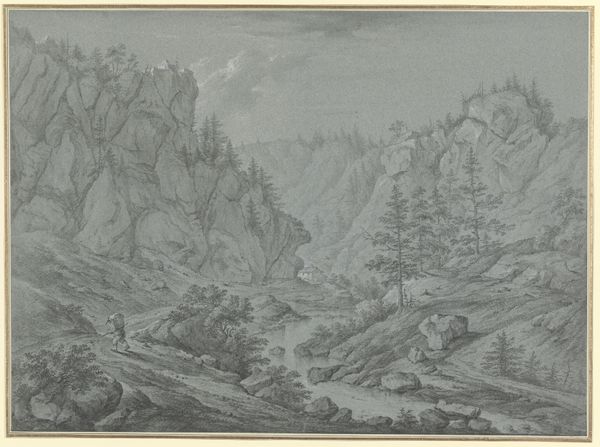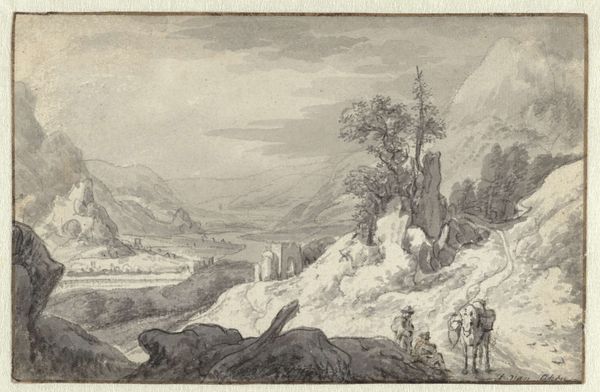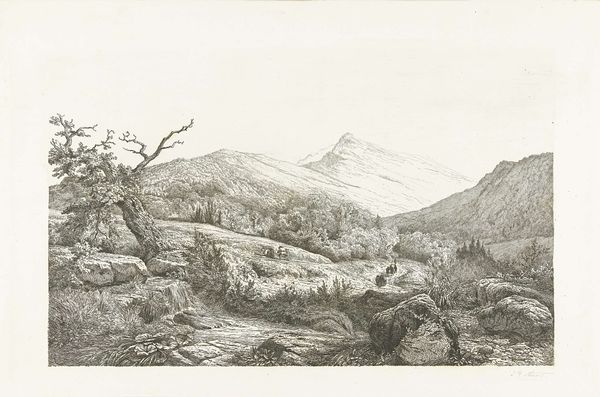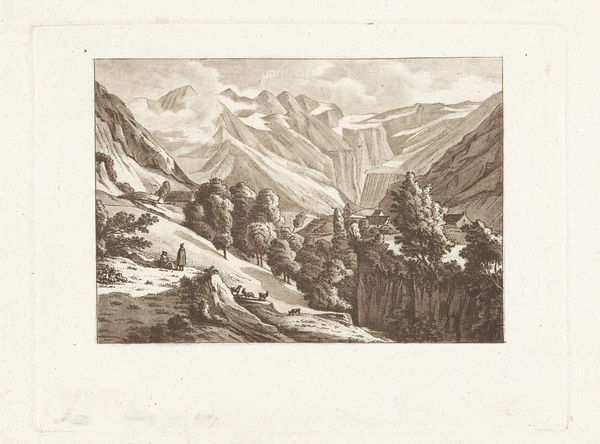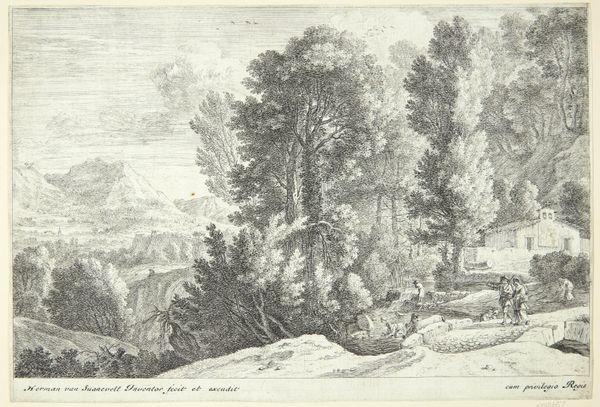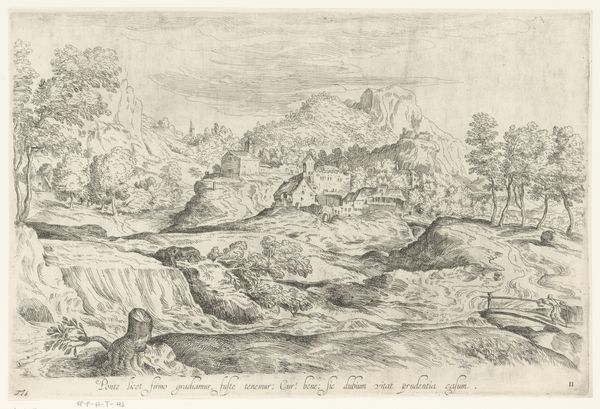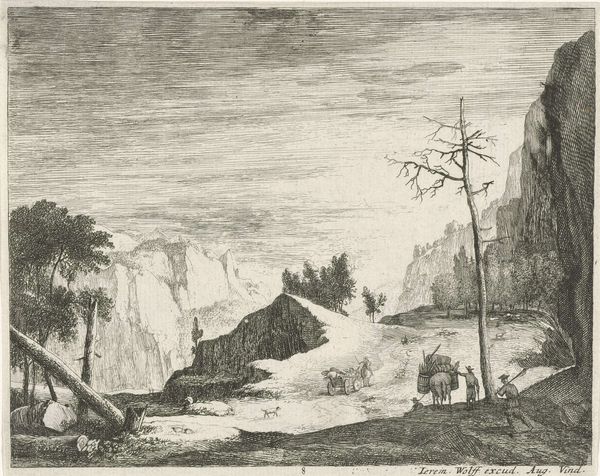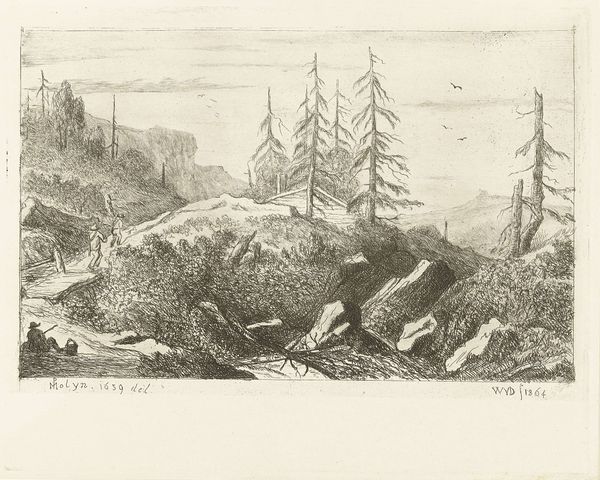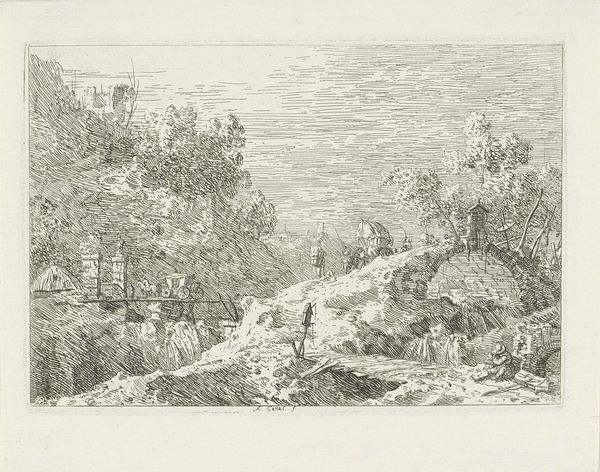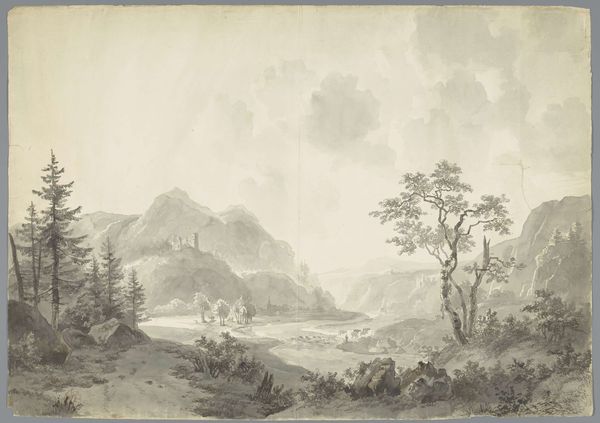
print, engraving
#
baroque
# print
#
landscape
#
line
#
engraving
Dimensions: height 234 mm, width 335 mm
Copyright: Rijks Museum: Open Domain
Editor: This engraving, “Ravijn met een kudde schapen” or “Ravine with a Flock of Sheep” by Johannes Glauber, created sometime between 1656 and 1726, is a beautifully rendered landscape. The contrast is incredible given the simple linework! What statements does this artwork try to make? Curator: That’s a great question! What strikes me is how this seemingly bucolic scene subtly reinforces hierarchical relationships prevalent at the time. Consider the sheep, rendered almost as anonymous, bleating masses at the base of the ravine. How does that image speak to power structures? Editor: I never considered that! It seemed like just part of the scenery, really highlighting the natural setting with just a small reminder of people's livelihood. Curator: Exactly. But notice how Glauber positions them. Are they active participants in the landscape or merely objects within it, a resource to be managed and profited from? The vastness of the ravine emphasizes the power of nature and the perceived insignificance, perhaps even the disposability, of both the animals and, by extension, the people who depend on them. Where is the shepherd? Editor: You’re right, I see that now. The scale seems to dwarf the sheep to emphasize our relationship with the natural environment, of how much land is actually available for their use. What about the line style and composition? How do those elements play into that dynamic? Curator: The precise linework, characteristic of engraving, imposes a sense of order onto the natural world. It is almost an attempt to control the uncontrollable! Does that make sense? Even the composition, with its carefully constructed foreground, middle ground, and background, suggests a deliberate framing and, therefore, a specific viewpoint being imposed on the viewer. Editor: Wow, I hadn’t thought of it that way! It’s much more loaded than just a pretty picture of a ravine. Curator: Absolutely. Art often reflects and reinforces societal norms and power dynamics, even when seemingly depicting neutral subjects like landscapes. So what’s changed for you? Editor: Now, I realize the importance of examining the historical and social context. It is just not an idyllic scene, but really, a comment on control and power. Thanks so much!
Comments
No comments
Be the first to comment and join the conversation on the ultimate creative platform.
